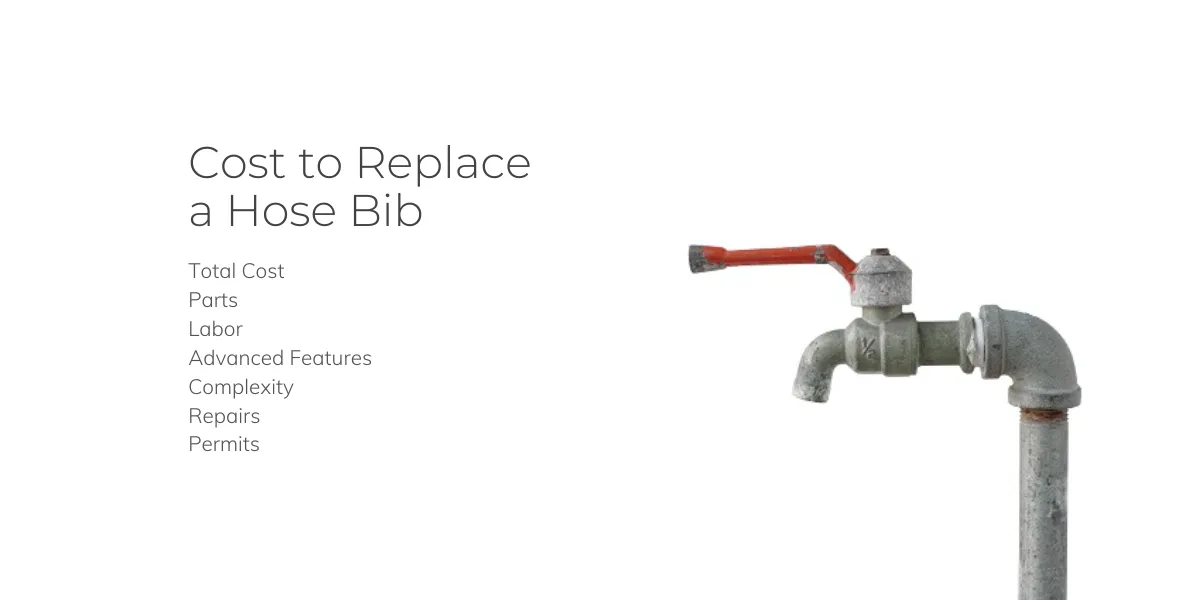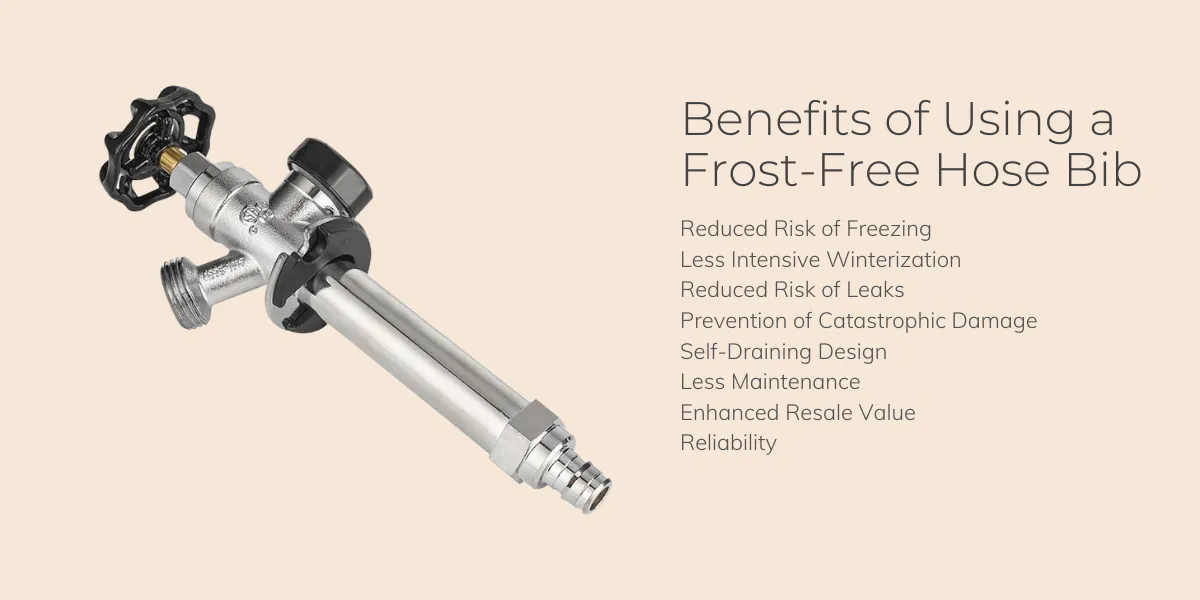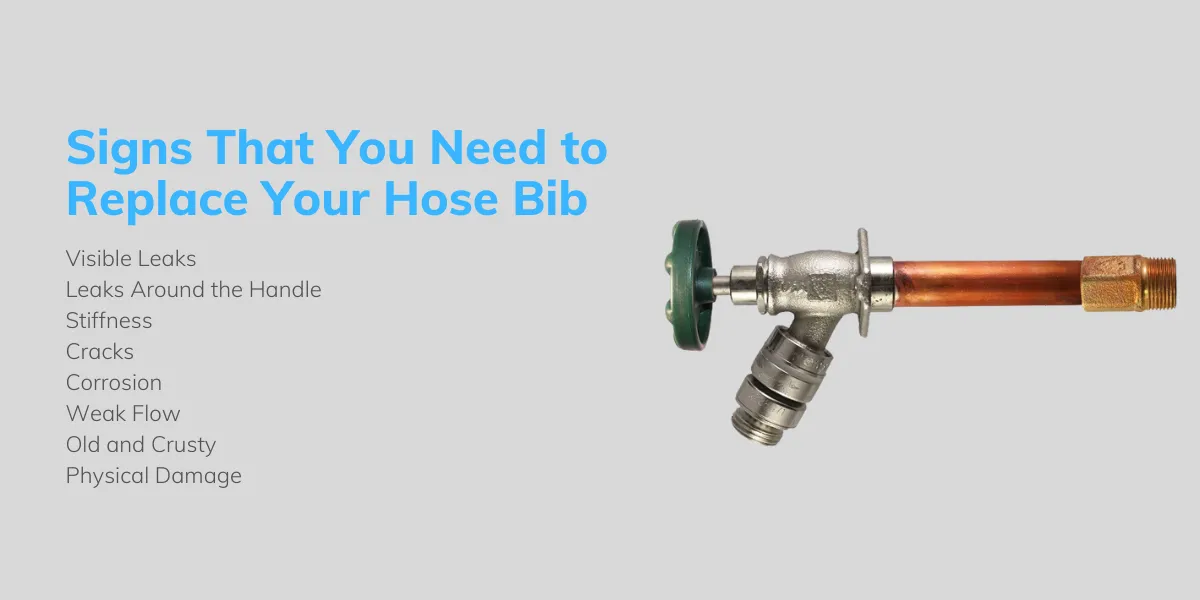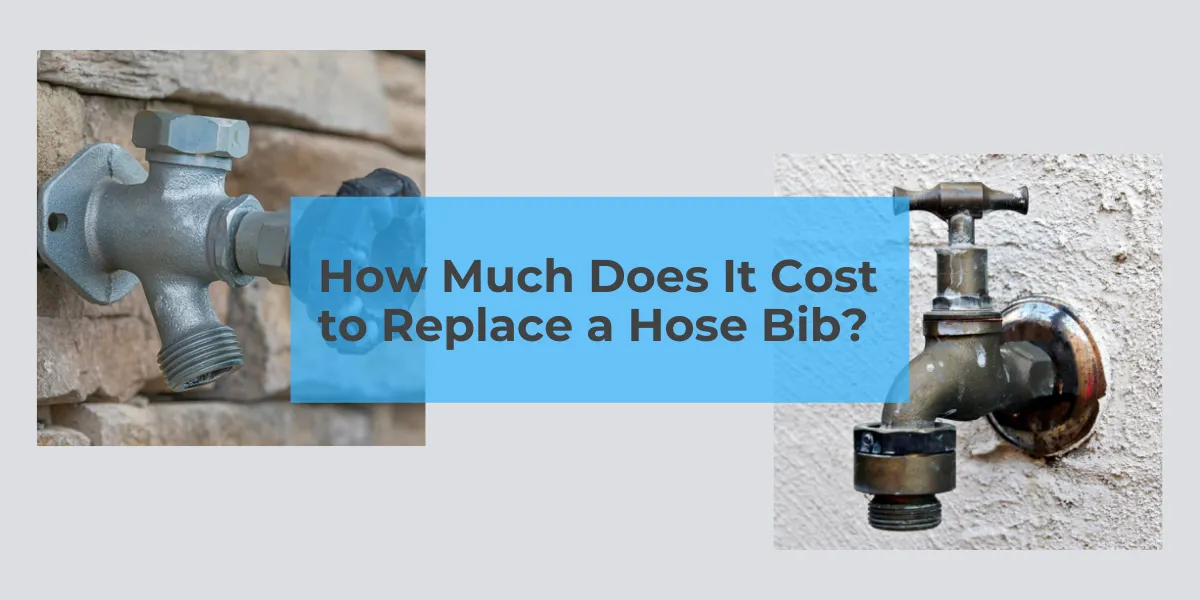Replacing a hose bib, also known as an outdoor faucet, is a common plumbing task that can vary significantly in cost depending on several factors. These factors include the material of the hose bib, local labor rates, and the complexity of the replacement process. For homeowners planning to undertake this project, understanding these costs is crucial to budget accordingly and avoid unexpected expenses. This article will help you to know the average costs associated with replacing a hose bib, providing a comprehensive breakdown to help you make informed decisions.
Cost to Replace a Hose Bib
Replacing a hose bib, also known as an outdoor faucet, can vary significantly in cost depending on several factors such as the material of the hose bib, local labor rates, and the complexity of the replacement process.

Average Costs
- Total Cost: The average total cost to replace a hose bib ranges from $150 to $350.
- Parts: The hose bib itself costs between $10 to $40.
- Labor: Labor costs are approximately $140 to $310. with plumbers charging $75 to $150 per hour.
- Advanced Features: Hose bibs with anti-frost or anti-siphon features cost more, with parts ranging from $40 to $100 and total installation costs reaching $250 to $450.
- Complexity: Simple replacements are typically less expensive, while jobs involving rerouting plumbing, repairs, or installing new piping can be more costly.
- Repairs: If the old hose bib leaked and caused water damage, additional repair costs can include $2 to $14 per square foot for siding repair and $15 to $30 per square foot for mold remediation.
- Permits: Some cities require permits for plumbing work, which can increase the overall cost
Benefits of Using a Frost-Free Hose Bib
Frost-free hose bibs offer several advantages over traditional hose bibs, particularly in regions prone to freezing temperatures. Here are some key benefits:

Reduced Risk of Freezing: Frost-free hose bibs are designed to prevent water from freezing in the pipes, which can lead to bursts and costly water damage.
Less Intensive Winterization: They require less effort to winterize, as the shut-off valve is located further inside the house, reducing the risk of freezing.
Reduced Risk of Leaks: Frost-free hose bibs minimize the potential for leaks and cracked pipes by keeping the water inside the home where it is warmer.
Prevention of Catastrophic Damage: They prevent the risk of extensive water damage that can occur when pipes burst due to freezing.
Self-Draining Design: Frost-free hose bibs feature a self-draining design that prevents water from pooling in the faucet and freezing.
Less Maintenance: They require less maintenance compared to traditional hose bibs, as they are designed to drain automatically when turned off.
Enhanced Resale Value: Investing in a frost-free hose bib can enhance the appeal of your home to potential buyers, demonstrating proactive measures to prevent freezing and flooding damage.
Reliability: Frost-free hose bibs provide a reliable outdoor water source that is unlikely to freeze during cold weather, offering peace of mind to homeowners.
Signs That You Need to Replace Your Hose Bib
Replacing a hose bib is often necessary when it shows signs of wear and tear, damage, or malfunction. Here are the key indicators that suggest it’s time to replace your hose bib:

- Visible Leaks: Water dripping from the hose bib, even when turned off, indicates worn-out internal components.
- Leaks Around the Handle: Moisture around the handle and stem suggests failed internal seals and valves.
- Stiffness: If the handle is hard to turn or feels loose, it may be due to mineral buildup, internal wear, or freeze damage.
- Cracks: Visible cracks or splits on the exterior or pipes are a clear sign that the hose bib needs to be replaced to prevent water damage and potential flooding.
- Corrosion: Rust or mineral deposits around the faucet stem indicate that the protective coating has been compromised, risking water quality and further damage.
- Weak Flow: If the hose bib struggles to provide adequate water pressure, it may be due to mineral buildup or internal wear, restricting water flow.
- Old and Crusty: Over time, hose bibs can become old and crusty, leading to leaks and other issues.
- Physical Damage: Physical damage from accidental bumps, forceful hose removals, or wear and tear can necessitate replacement.
Summary
The cost to replace a hose bib ranges from $150 to $350 on average, with the hose bib itself costing $10 to $40 and labor costs ranging from $140 to $310. Simple replacements are typically on the lower end of this spectrum, while more complex jobs that involve rerouting plumbing or installing new piping can be more expensive. Advanced features such as anti-frost or anti-siphon capabilities can also increase the cost, with parts costing $40 to $100 and total installation costs reaching $250 to $450. Additionally, any necessary repairs due to water damage can add to the overall expense, with siding repair costs averaging $2 to $14 per square foot and mold remediation costs ranging from $15 to $30 per square foot.


